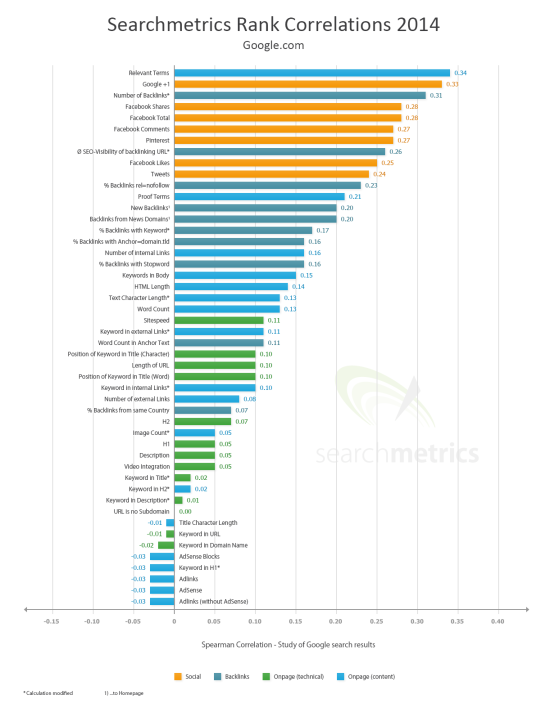The SEO Impact of Social Signals Continues to Grow in 2014
Article by Adam Wagner | Digital Marketing Specialist Happy New Year! As we usher in 2014 we wanted to discuss the hottest trend in SEO for the upcoming year – Social Signals. Google is constantly updating and refining their search algorithms to provide searchers like you and me with the best possible results. This means that SEO’s always need to be evolving. This past year – 2013 – saw large-scale change with animal named Google updates such as Hummingbird and Penguin, which fought longstanding practices of spammy SEO techniques. As Google grows up it is becoming more adept at understanding “real content” that is being shared and engaged with organically. As Google gets better at finding great sites, they are actively rewarding those sites. So, in 2014 more than any previous year it is important to have a great site with great content that people want to share. It is no longer enough to create a poor site and spam a few keywords to gain traffic. One of the fasting growing trends in SEO is the importance of social signals. A social signal is a mention of your brand or share of your content on a social network. Google is monitoring this activity and rewarding sites that have a large volume of social signals. Influence of Social Signals on Rankings Every year SearchMetrics performs a comprehensive review of SEO ranking factors. Check out the cool chart below. Traditionally the number of backlinks has always been the most important SEO ranking factor. This year the number of backlinks is still very important, but as you can see it is matched by numerous social signals such as Google+ and Facebook shares.
Now, before you completely change your SEO strategy, please note that the social metrics show correlation and not necessarily causation. Social signals are a very new metric in the SEO world. We know that a higher number of backlinks causes rankings to increase after years of practice. Many in the industry believe that social signals are moving this direction and may even replace or outweigh backlinks in the future, but they are still in their infancy as a metric. Therefore, in a cautiously optimistic tone we are deeming social signals the future of SEO and encourage site owners to start building a foundation and site marketing plan that places importance on social signals.
In this chart, Google+ and Facebook show as the most important social networks with Twitter following closely behind. I would argue that Google+’s importance is inflated because it is owned by Google. Google+ does not have the engagement and potential for ROI that Facebook does. Therefore, I would place Facebook as your top priority when budgeting time and resources because it will provide a tangible SEO benefit as well as allow you to engage with an active and relevant audience.
How Do Social Signals Relate to My Site?
There are two primary types of social signals:
Traditionally the number of backlinks has always been the most important SEO ranking factor. This year the number of backlinks is still very important, but as you can see it is matched by numerous social signals such as Google+ and Facebook shares.
Now, before you completely change your SEO strategy, please note that the social metrics show correlation and not necessarily causation. Social signals are a very new metric in the SEO world. We know that a higher number of backlinks causes rankings to increase after years of practice. Many in the industry believe that social signals are moving this direction and may even replace or outweigh backlinks in the future, but they are still in their infancy as a metric. Therefore, in a cautiously optimistic tone we are deeming social signals the future of SEO and encourage site owners to start building a foundation and site marketing plan that places importance on social signals.
In this chart, Google+ and Facebook show as the most important social networks with Twitter following closely behind. I would argue that Google+’s importance is inflated because it is owned by Google. Google+ does not have the engagement and potential for ROI that Facebook does. Therefore, I would place Facebook as your top priority when budgeting time and resources because it will provide a tangible SEO benefit as well as allow you to engage with an active and relevant audience.
How Do Social Signals Relate to My Site?
There are two primary types of social signals:
- Active engagement with and posting on a social property that you own and is related to your site.
- Discussion by others about your site and/or product on their social properties.
- Add “Share This” icons to your site making it easy for users to share your content
- Create high-quality and relevant content that your audience will love and want to share
- Actively engage with others on social networks
- Ask your email subscribers to follow/like your brand